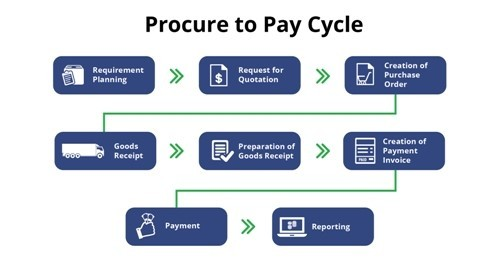Top Challenges in the Procure-to-Pay Process and How to Overcome Them
- marclaytonpro
- Jul 15, 2024
- 3 min read
The procure-to-pay (P2P) process, encompassing procurement, receiving, and payment of goods and services, is vital for business operations. Despite its importance, many organizations face significant challenges in managing this process efficiently. In this blog, we will explore the top challenges in the procure-to-pay process and provide practical solutions to overcome them.
Challenge 1: Lack of Process Visibility
Problem:
A common issue in the P2P process is the lack of visibility. With multiple departments involved, it can be difficult to track the status of orders, invoices, and payments. This lack of transparency leads to inefficiencies and delays.
Solution:
Implementing a comprehensive P2P software solution can provide real-time visibility into the entire process. These tools offer dashboards and reporting features that allow stakeholders to monitor the status of orders, identify bottlenecks, and make informed decisions quickly.
Challenge 2: Manual Processes and Paperwork
Problem:
Reliance on manual processes and paper-based documentation leads to errors, delays, and increased operational costs. Manual data entry is prone to mistakes, and physical paperwork can be lost or misplaced.
Solution:
Automating the P2P process is essential to eliminate manual tasks. By using electronic procurement systems, businesses can automate order creation, invoice processing, and approval workflows. This not only reduces errors but also speeds up the entire process and enhances accuracy.
Challenge 3: Supplier Management
Problem:
Managing multiple suppliers and ensuring compliance with contracts can be challenging. Poor supplier management can result in missed discounts, late deliveries, and strained relationships.
Solution:
Implementing a supplier management system helps centralize supplier information, track performance, and ensure compliance with agreements. Regular communication and performance reviews with suppliers can also strengthen relationships and lead to better terms and conditions.
Challenge 4: Invoice Matching and Discrepancies
Problem:
Matching invoices with purchase orders and receipts is a tedious task that often results in discrepancies. These mismatches can delay payments and cause friction between buyers and suppliers.
Solution:
Automated matching systems can cross-verify invoices, purchase orders, and receipts, flagging discrepancies for review. This reduces manual effort and speeds up the reconciliation process. Additionally, setting clear guidelines for invoice submission and ensuring that all relevant documents are available can minimize discrepancies.
Challenge 5: Compliance and Risk Management
Problem:
Ensuring compliance with internal policies and external regulations is crucial but can be complex. Non-compliance can lead to legal issues and financial penalties.
Solution:
Integrating compliance checks within the P2P process ensures that all transactions adhere to regulatory requirements. Regular audits and training for employees on compliance policies can further mitigate risks. Utilizing P2P software that includes compliance features can automate these checks and provide peace of mind.
Challenge 6: Inefficient Approval Workflows
Problem:
Approval workflows that are not streamlined can cause delays, resulting in late payments and potential penalties. Bottlenecks in the approval process can also impact supplier relationships.
Solution:
Designing and implementing efficient approval workflows is key. Automated approval systems route invoices and orders to the appropriate personnel based on predefined rules, ensuring timely review and approval. Setting up automated reminders and escalation protocols can further enhance workflow efficiency.
Challenge 7: Data Integration
Problem:
Disparate systems and lack of integration between procurement, accounting, and inventory systems can lead to data silos. This fragmentation hinders data accuracy and decision-making.
Solution:
Investing in an integrated P2P platform that connects procurement, accounting, and inventory management systems ensures seamless data flow. This integration provides a unified view of the entire process, enhancing accuracy and enabling better decision-making.
Conclusion
The procure-to-pay process is fraught with challenges, but with the right strategies and tools, these challenges can be effectively managed. Implementing automation, ensuring compliance, streamlining workflows, and integrating systems are essential steps to overcome the common obstacles in the P2P process. By addressing these challenges, businesses can achieve greater efficiency, reduce costs, and foster stronger supplier relationships. SITES WE SUPPORT
SOCIAL LINKS




Comments